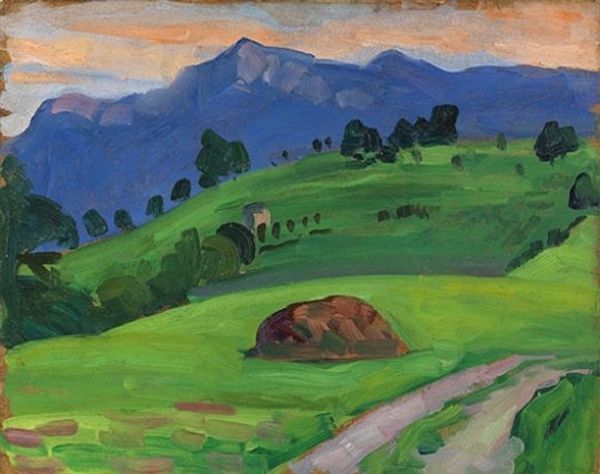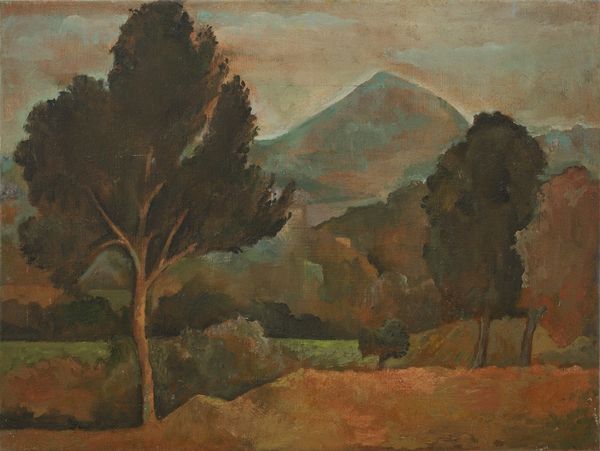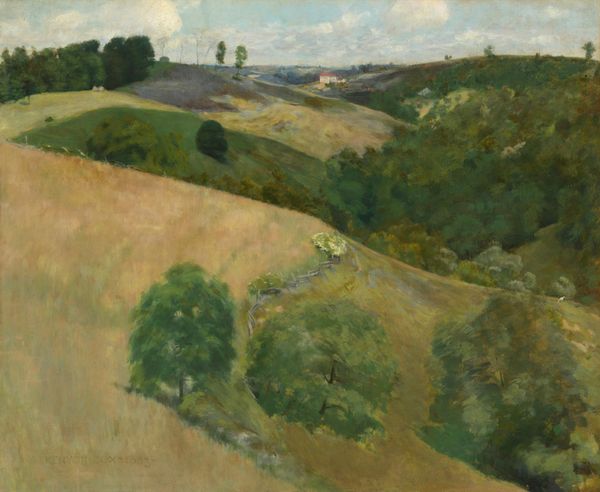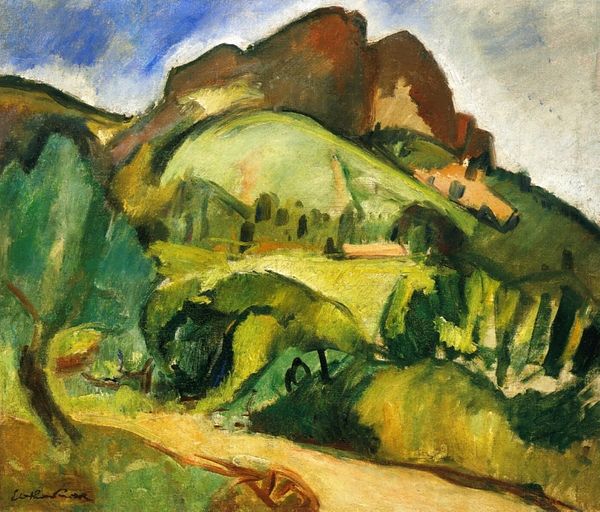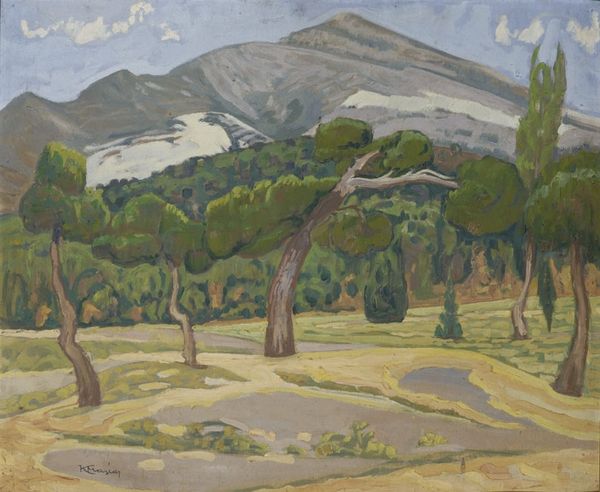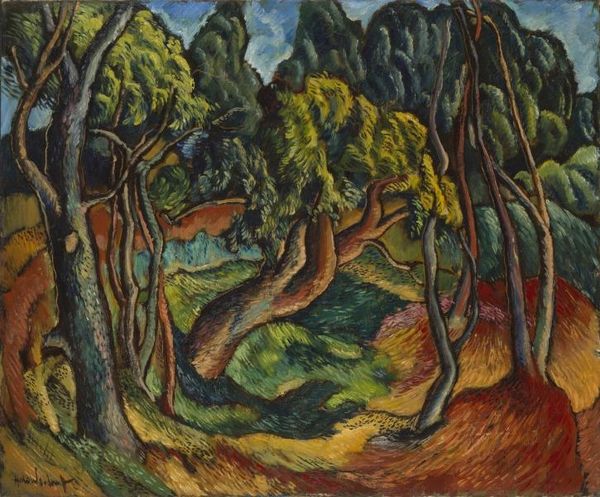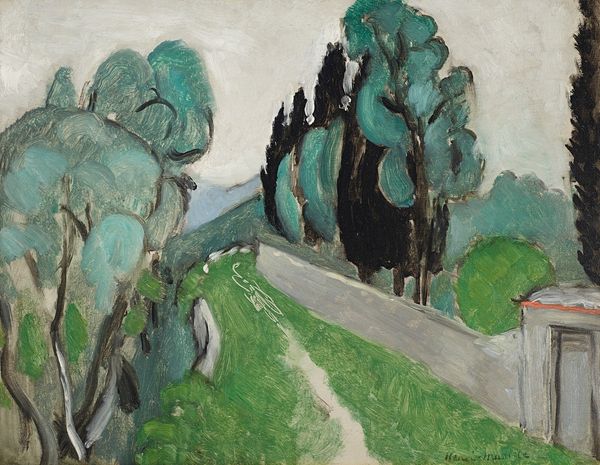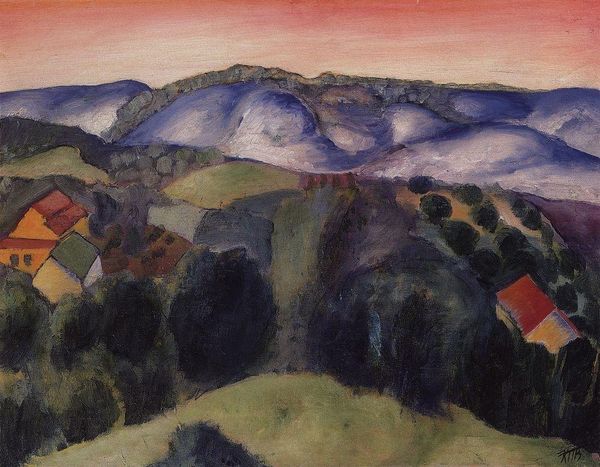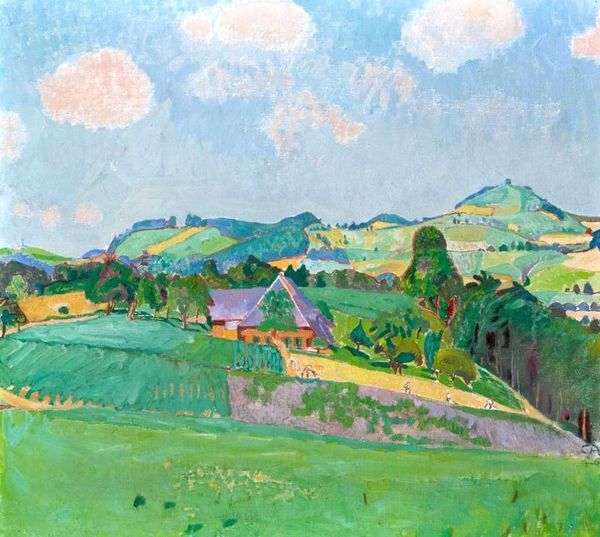
painting, oil-paint
#
painting
#
canvas painting
#
oil-paint
#
landscape
#
impressionist landscape
#
oil painting
#
geometric
#
expressionism
#
cityscape
#
expressionist
Copyright: Kmetty János,Fair Use
Curator: Welcome. We’re standing before Kmetty János's "Landscape," created in 1910 using oil on canvas. Kmetty, a Hungarian artist, here provides his striking vision of the early 20th century cityscape. Editor: It’s… surprisingly stern for a landscape. Not exactly a gentle pastoral scene, is it? There's this underlying current of rigidness to it, almost as if the scene is about to solidify or transform. Curator: Absolutely. Note the pronounced geometric forms and the flattening of the picture plane. This approach to landscape painting reveals the influence of Expressionism that moved through Hungarian art circles. One could see this rigidity and simplification as a visual manifestation of social upheaval and urban industrial growth felt at the time. Editor: Yes! It almost feels dystopian now that you mention it. I get the urge to rearrange those trees! And that steeple feels really assertive and angular. Do you think that church acted like some visual representation of institutions exerting authority during that time? Curator: Interesting reading. Certainly, the church with its tall steeple can be interpreted as a symbol of authority amidst urban expansion. And indeed, János's landscapes after 1910 show increasing experiments with sharper angles, as he pushes the influence of geometric forms and moves toward Constructivism and the emergence of social-realist imagery. Editor: Knowing that trajectory kind of taints it for me, not gonna lie. This is the moment before it all turns a bit… colder? Still, the bold colours draw me in; and despite that sternness I mentioned, I find myself intrigued by this very direct simplicity. It seems vulnerable. Curator: It’s that vulnerability that makes it appealing, despite the tension, perhaps? Kmetty’s “Landscape,” like many landscapes of its time, captures more than scenery, it reflects society’s ever-changing role. It acts as a document that allows viewers to glimpse through historical changes in aesthetic interpretation. Editor: A final thought… this might be my favourite sort of ‘memento mori’ landscape. The anxiety feels like a warning. Not to be too glib but, you know: Watch this space! Curator: Aptly said. An unease perhaps reflecting the social transformations reshaping the Hungarian artistic landscape and national identity. Let's move on to consider other artists of this period, allowing further reflection on the transformations within early twentieth-century artistic trends.
Comments
No comments
Be the first to comment and join the conversation on the ultimate creative platform.


